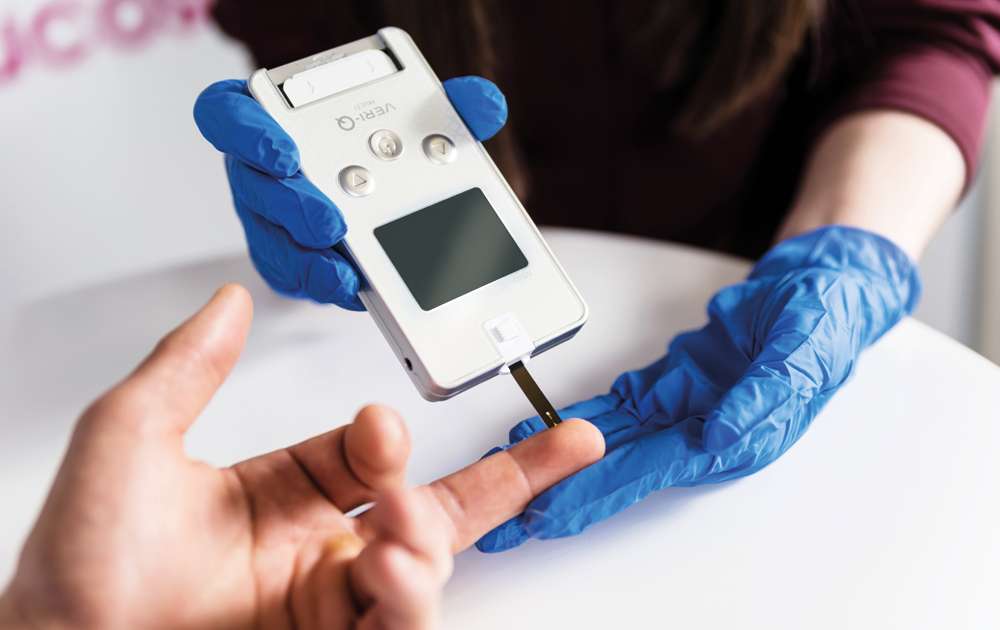Cholesterols Are Not All Bad; Great Cholesterol May Ensure Liver
Nikki Attkisson | Last Updated : July 24, 2021The body’s purported acceptable cholesterol might be far superior to what we understand. Washington University School of Medicine in St. Louis ran a very recent experiment. They propose that one sort of high-thickness lipoprotein (HDL) has a formerly obscure job in shielding the liver from injury. This HDL ensures the liver by obstructing incendiary signs delivered by gut microorganisms.
Cholesterols Are Not All Bad; Great Cholesterol May Ensure Liver
HDL is generally known for cleaning up cholesterol in the body and conveying it to the liver for removal. However, in the new investigation, the scientists recognized an uncommon kind of HDL. It is considered HDL3. It got created by the digestive system, blocks gut bacterial signs that cause liver aggravation. If not hindered, these bacterial signs venture out from the digestive tract to the liver, where they enact invulnerable cells that trigger an incendiary state, which prompts liver harm.

Any kind of intestinal harm can affect how a gathering of organisms called Gram-negative microbes can influence the body. Such microorganisms produce a fiery atom called lipopolysaccharide that can venture out to the liver through the entryway vein. The gateway vein is the significant vessel that provisions blood to the liver, and it conveys most supplements to the liver after food got caught up in the digestive tract.
Substances from gut microorganisms may go alongside supplements from food to initiate insusceptible cells that trigger aggravation. Thusly, components of the gut microbiome may drive liver illness, including greasy liver sickness and liver fibrosis, in which the liver creates scar tissue.
Randolph is a specialist in this field. He became intrigued by this point through a joint effort with two Washington University specialists, Emily J. Onufer, MD, a careful occupant, and Brad W. Warner, MD, the Jessie L. Ternberg Ph.D., MD, Distinguished Professor of Pediatric Surgery and boss specialist at St. Louis Children’s Hospital, both co-creators on the examination.
Some untimely babies foster a hazardous condition. It is called necrotizing enterocolitis. It is an irritation of the digestive system. It can require a bit of the digestive system to be precisely eliminated. Even after an effective inside the medical procedure, such children frequently foster liver infection, and Onufer and Warner needed to get why.
The HDL3 makes this short excursion down the entryway vein. It ties to a protein called LBP – lipopolysaccharide restricting protein. It ties to the hurtful lipopolysaccharide. When the hurtful lipopolysaccharide gets bound to this mind-boggling, it gets impeded from initiating invulnerable cells called Kupffer cells. These are macrophages that dwell in the liver and when actuated by lipopolysaccharide, can drive liver aggravation.
As a complex of proteins and fats, HDL3 utilizes its association with LBP to tie to lipopolysaccharide. At the point when LBP is essential for the HDL3 complex, it keeps the unsafe bacterial particle from enacting the liver Kupffer cells and inciting aggravation, as indicated by tests directed by first writer Yong-Hyun Han, Ph.D., when he was a postdoctoral scientist in Randolph’s lab. Han is presently on the personnel of Kangwon National University in South Korea.
The specialists showed that liver injury is more awful when HDL3 from the digestive tract is diminished, for example, from the careful evacuation of a part of the digestive system.
In these models of intestinal injury, the specialists found that HDL3 was defensive, restricting the extra lipopolysaccharide delivered from the harmed digestive system and hindering its downstream fiery impacts in the liver.
The scientists further showed that the equivalent defensive sub-atomic buildings were available in human blood tests, recommending a comparable component is available in individuals. They additionally utilized a medication compound to expand HDL3 in the digestive organs of mice and discovered it to be defensive against various kinds of liver injury. The medication is just accessible for creature research.
The investigation uncovers additional opportunities for treating or forestalling liver sickness, regardless of whether it originates from harm to the digestive tract brought about by high-fat weight control plans, liquor abuse, or actual injury, for example, from a medical procedure.
Also Read: The F Formula Reviews
With over 15 years as a practicing journalist, Nikki Attkisson found herself at Powdersville Post now after working at several other publications. She is an award-winning journalist with an entrepreneurial spirit and worked as a journalist covering technology, innovation, environmental issues, politics, health etc. Nikki Attkisson has also worked on product development, content strategy, and editorial management for numerous media companies. She began her career at local news stations and worked as a reporter in national newspapers.
